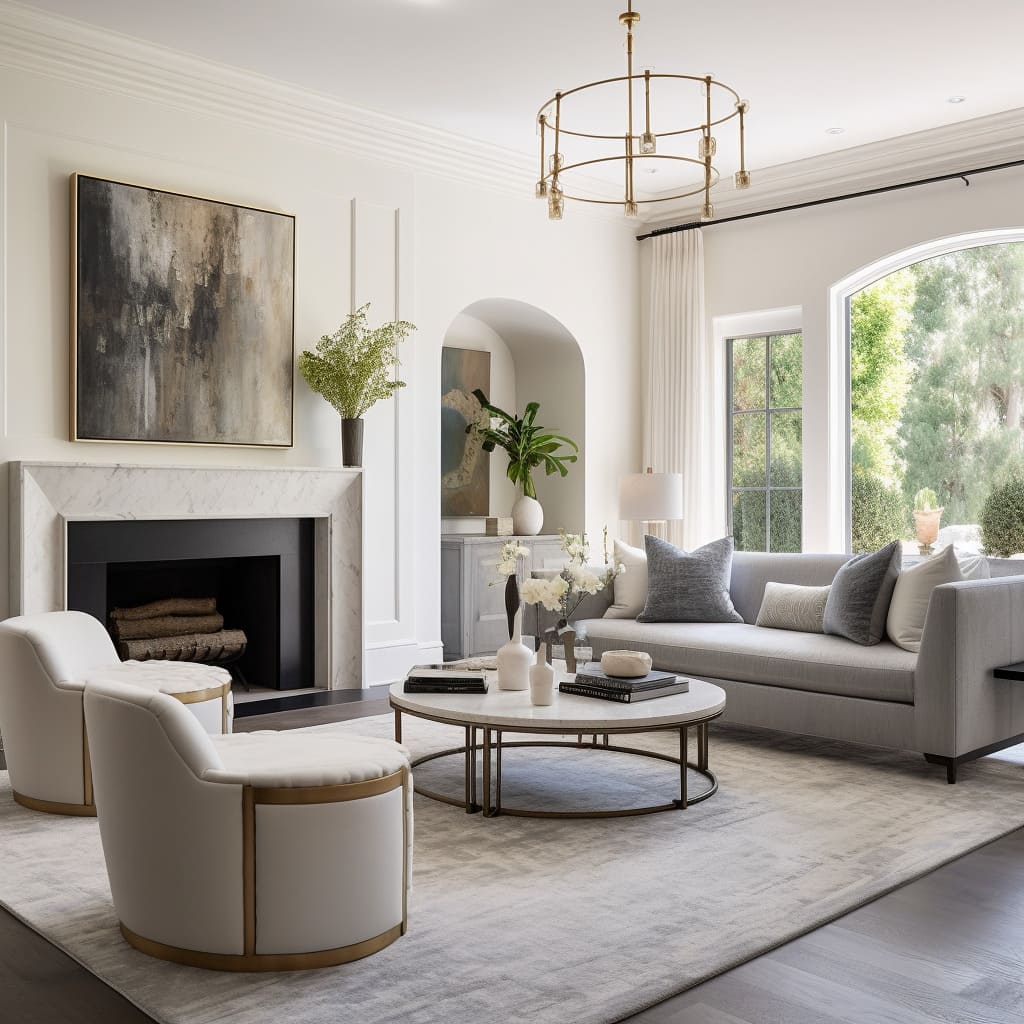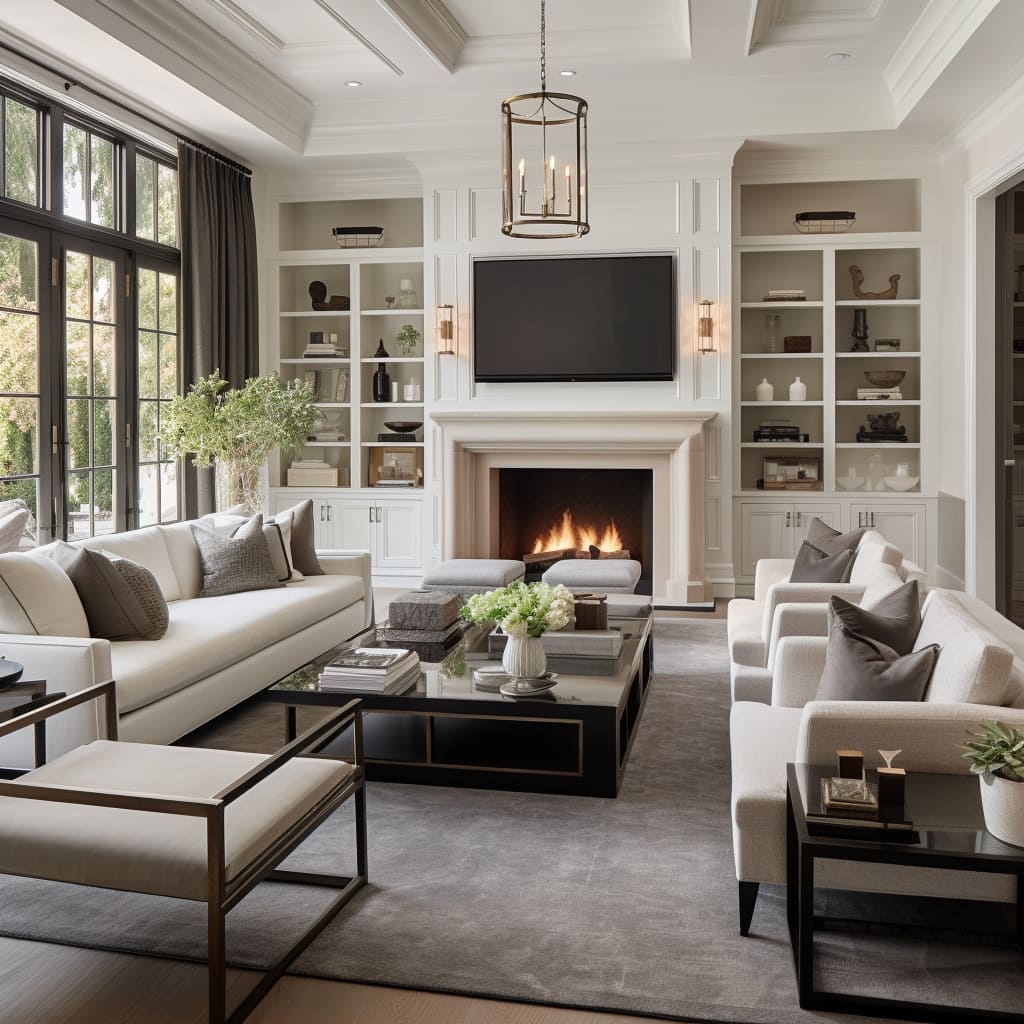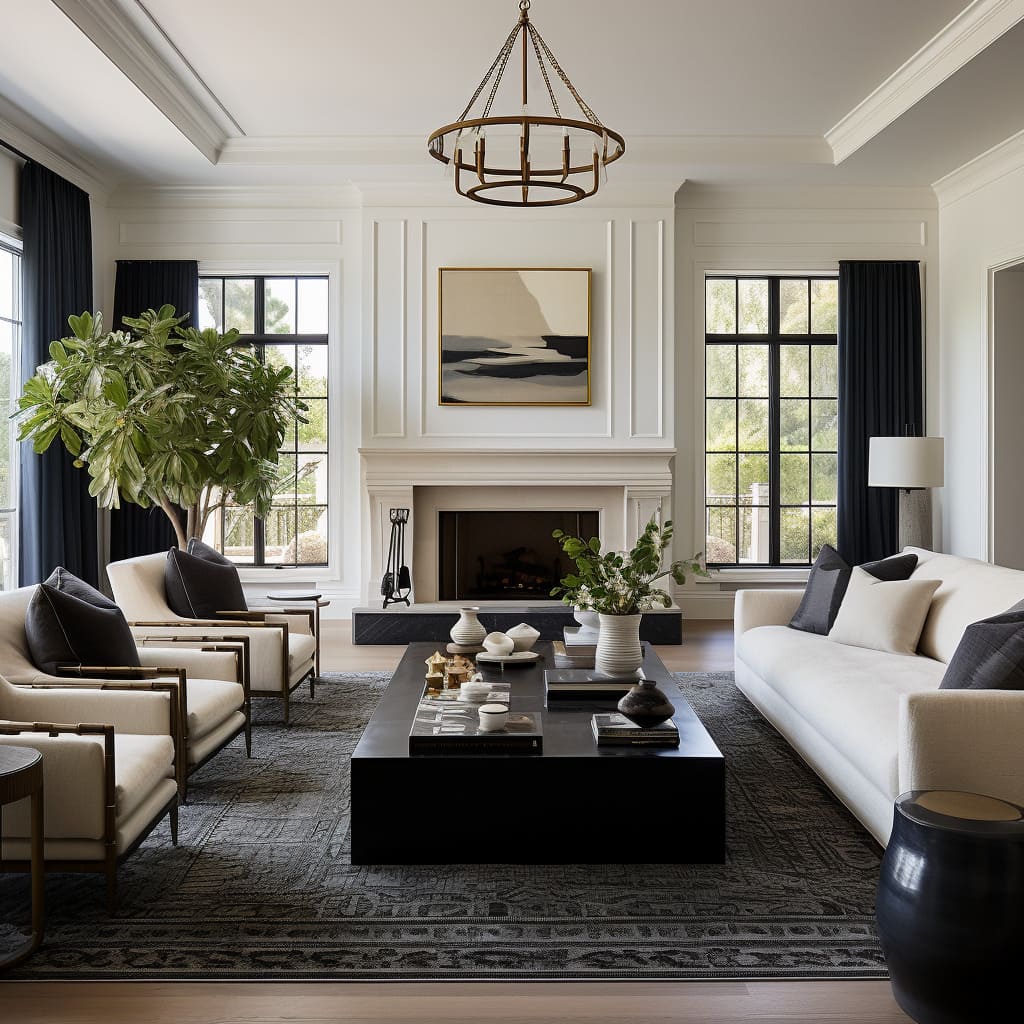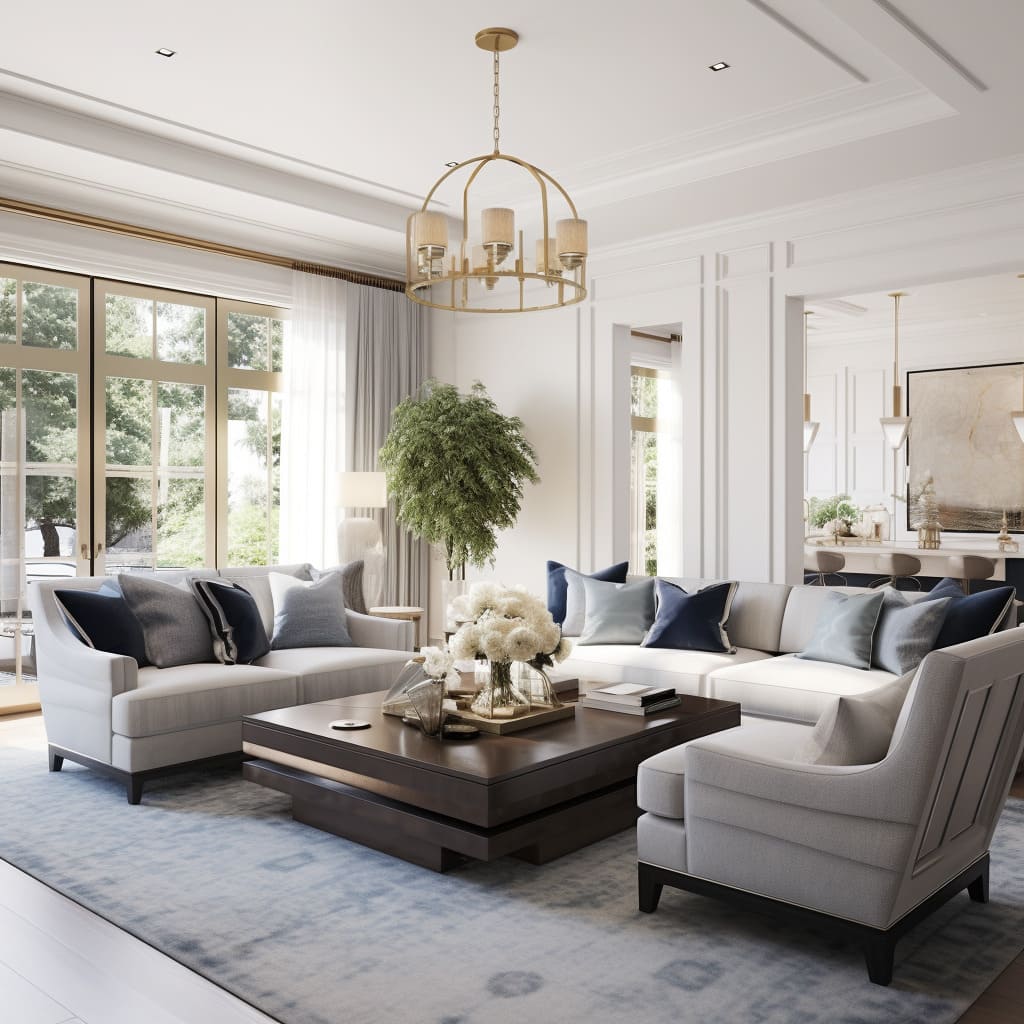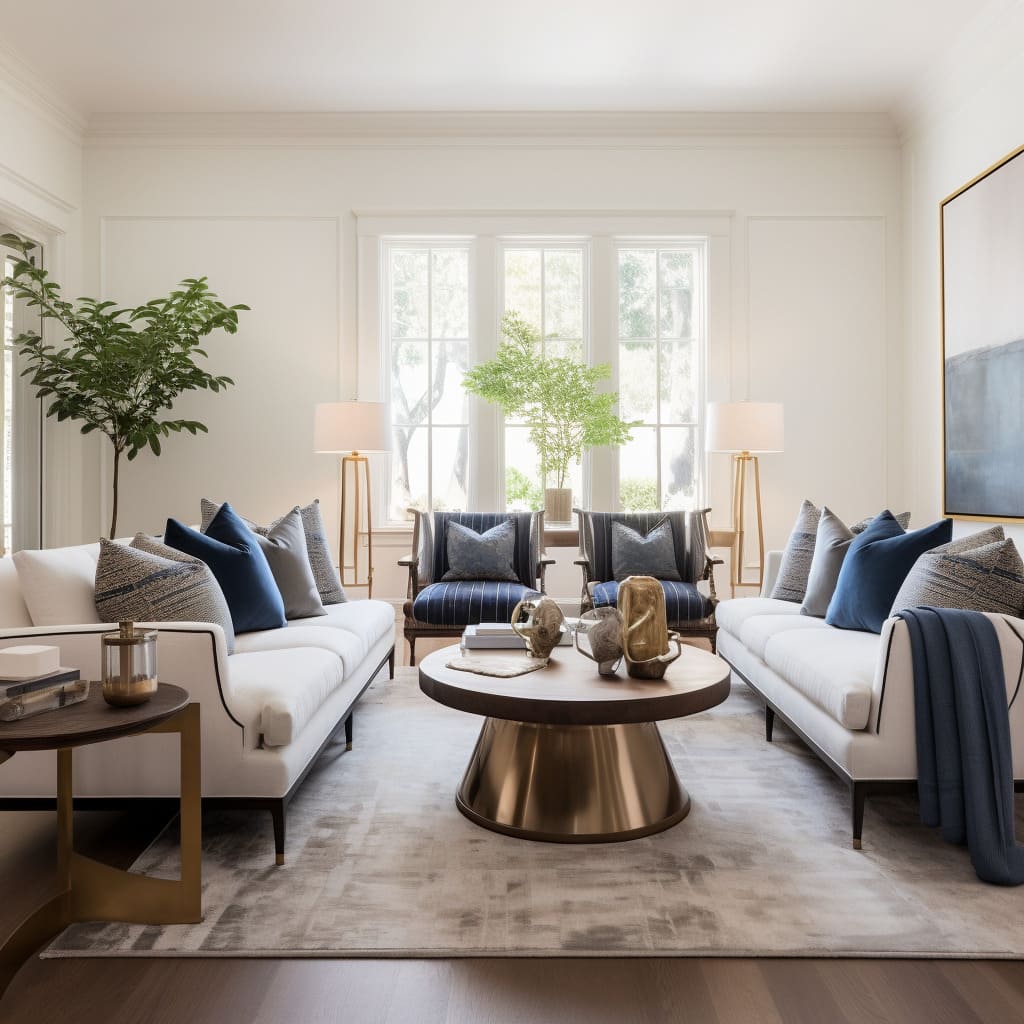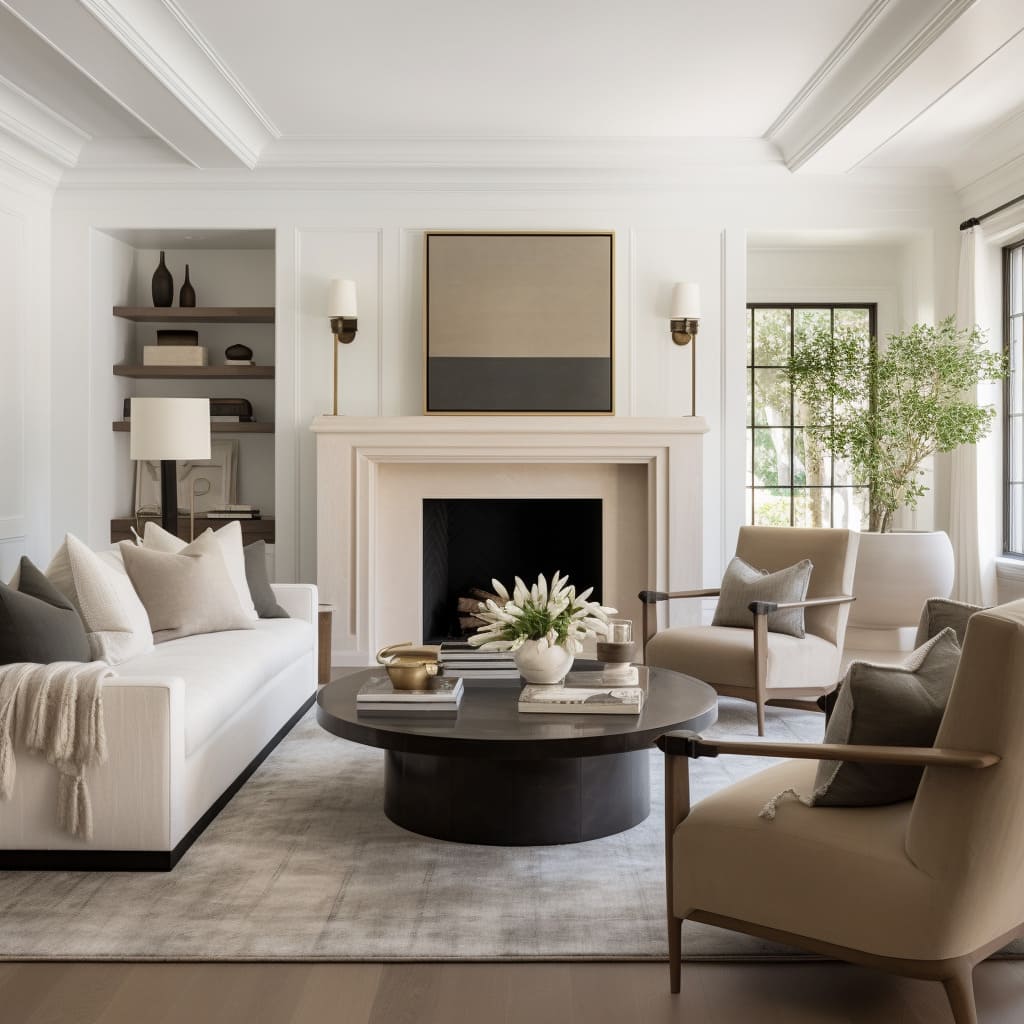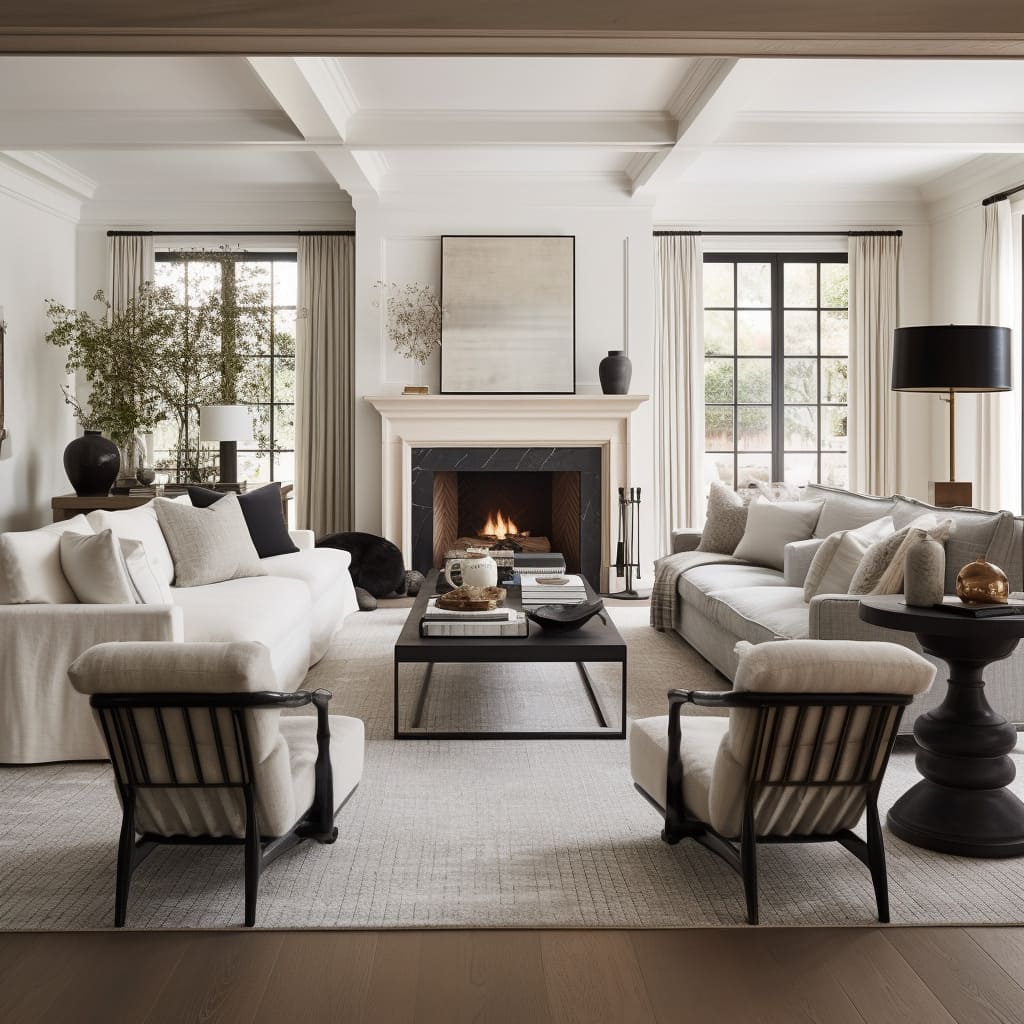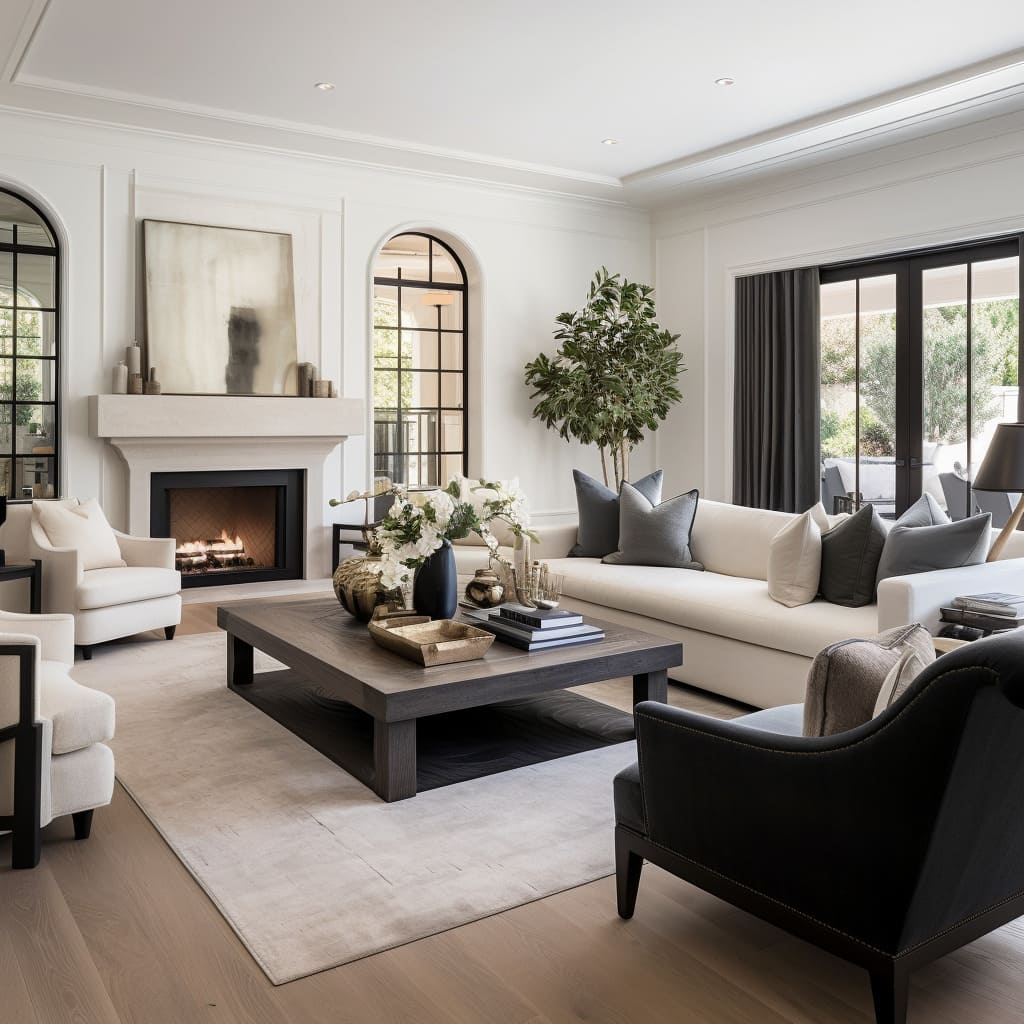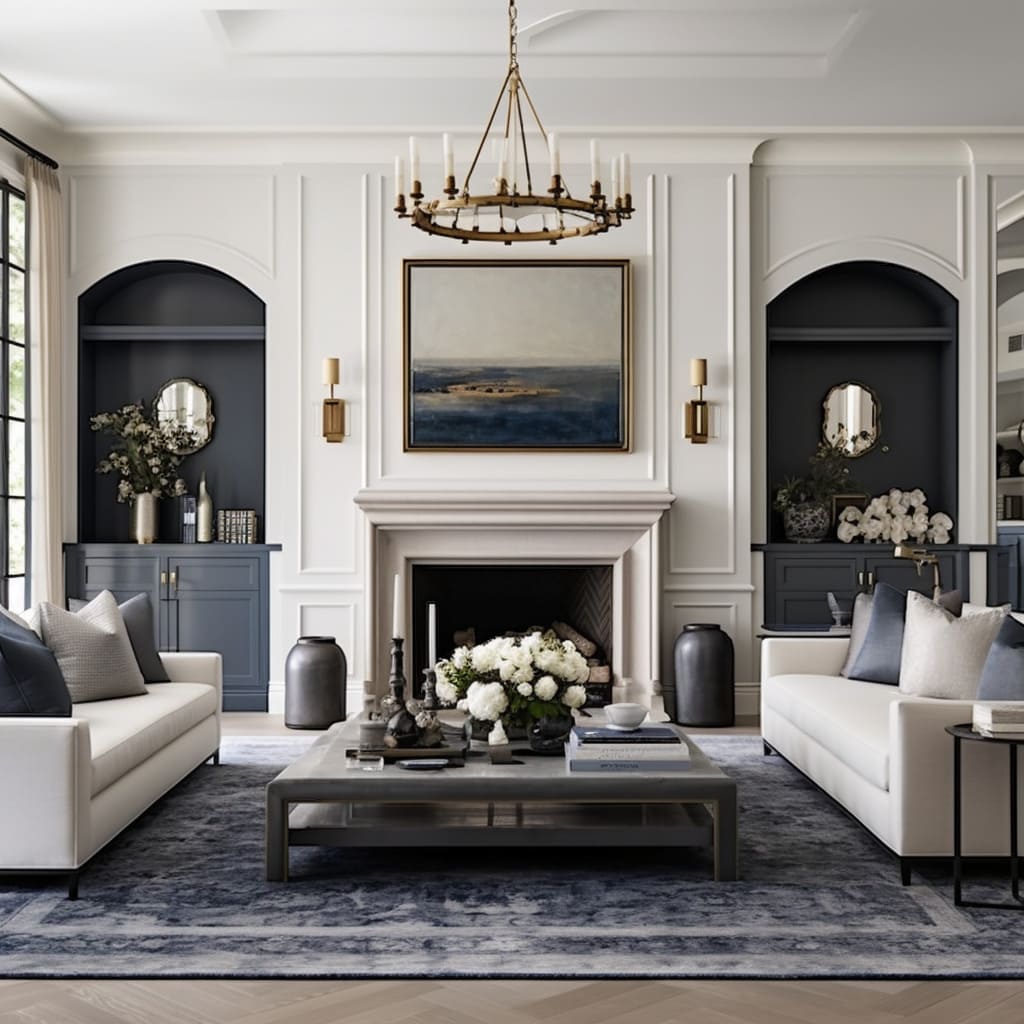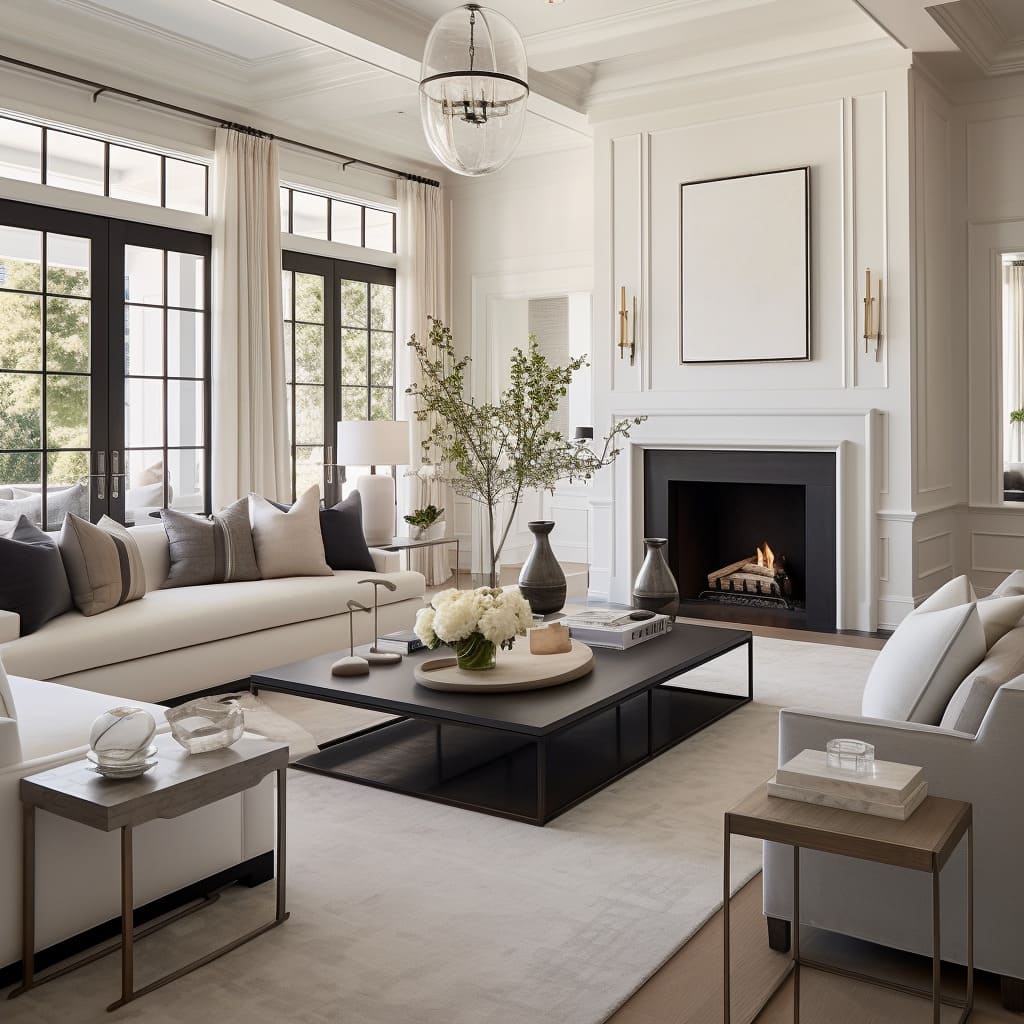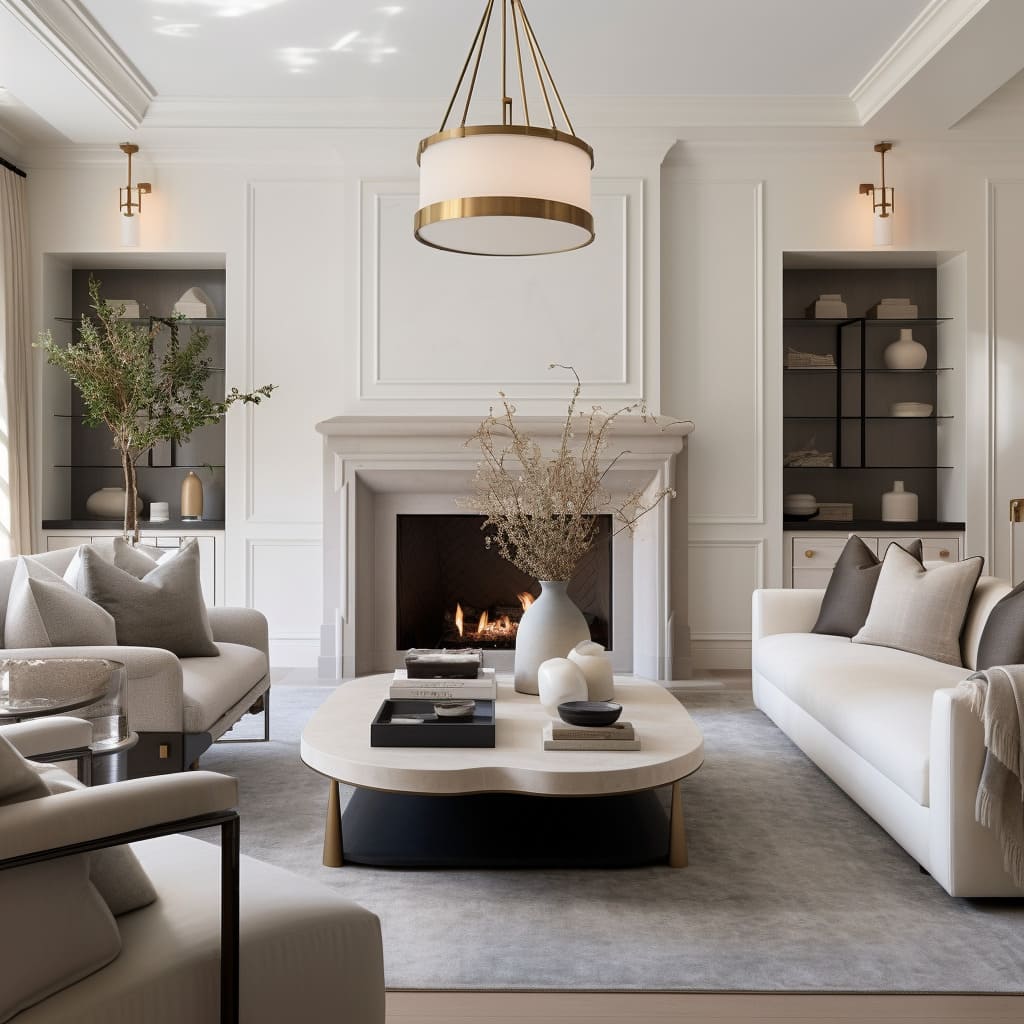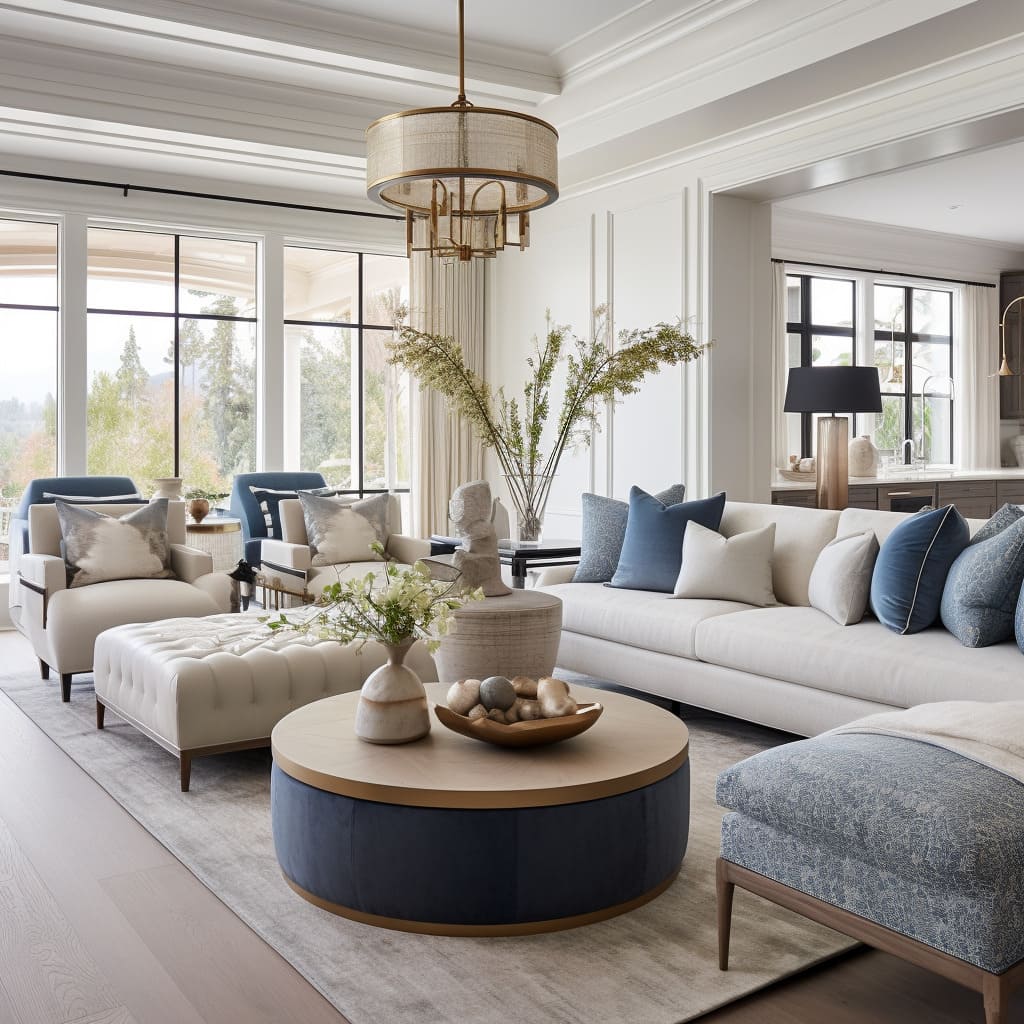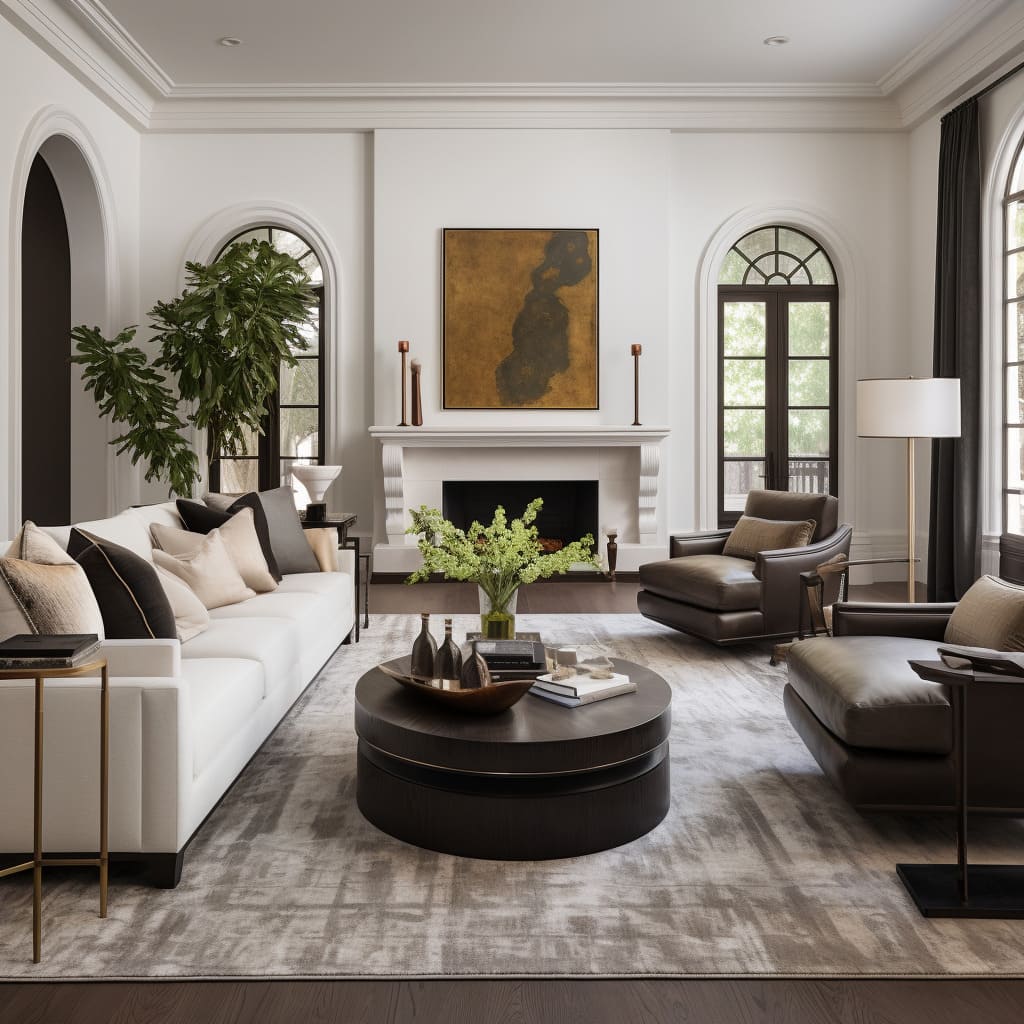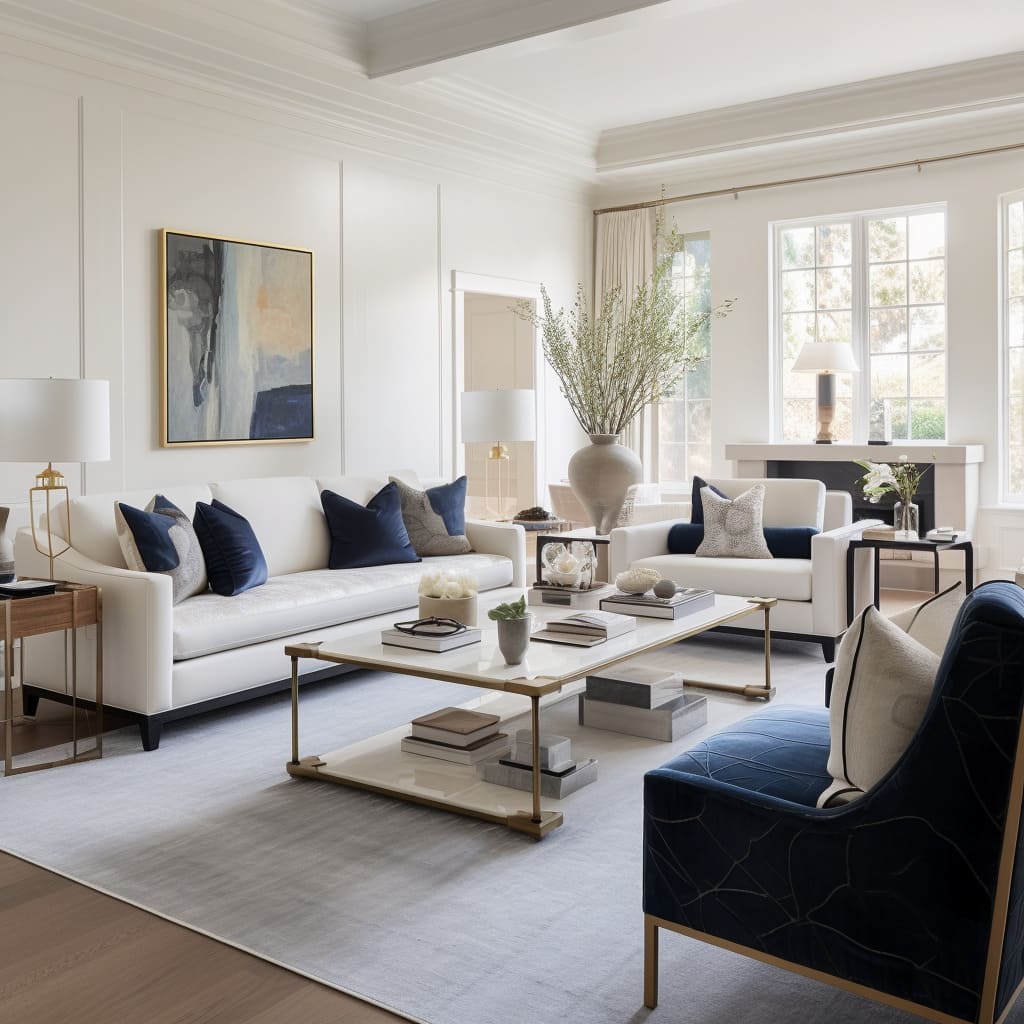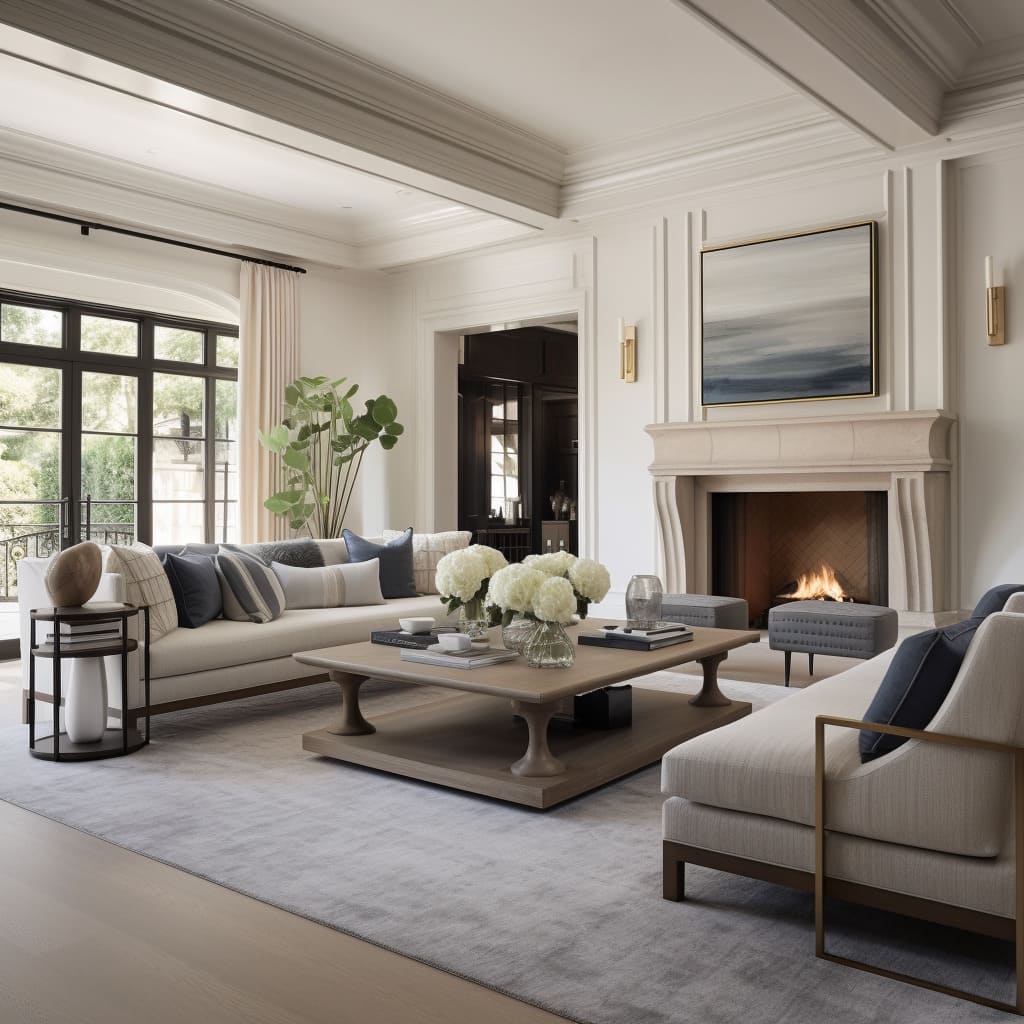Transitional interior design is a harmonious blend where the comfort of traditional decor and the simplicity of modern style intertwine. This design philosophy nurtures an environment that feels both welcoming and refined.
Neutral tones set the stage for a design language that speaks to serenity as much as it does to sophistication, creating spaces that invite you to relax and admire. It is this seamless blend that makes transitional design uniquely adaptable to personal taste and various architectural styles, from classic Victorian homes to modern urban lofts.
Color Harmony: The Neutral Palette
Neutral colors are indeed the cornerstone of transitional design. The palette of whites, grays, and deep blues come together to fashion a setting that is tranquil and stylish.
These colors offer a canvas of versatility, enabling one to introduce splashes of bolder colors or various textures without overwhelming the space’s calm essence.
Textural Contrast: Mixing Materials
The beauty of transitional spaces is significantly enhanced by the deliberate use of a variety of textures and materials. Imagine the softness of plush rugs underfoot, paired with the sleek coolness of metal accents and the organic appeal of stone tabletops.
Fabrics may range from the lush feel of velvet upholstery to the crispness of linen drapes. The juxtaposition of these materials adds a dimensional quality to the room, making it visually rich and tactilely inviting.
This strategic mix not only adds interest but also ensures that the room has a dynamic yet harmonious aesthetic.
Light and Reflection: Illuminating the Space
Light plays a pivotal role in transitional design, acting as both a functional and decorative element. The influx of natural light during the day enlivens the space, while in the evenings, the glow from thoughtfully placed lamps and overhead fixtures adds a layer of warmth and comfort.
Reflective surfaces play with light, amplifying its presence and creating a sense of expansiveness. Well-placed mirrors can make a room feel larger, while polished metals and glass can add a touch of sparkle and luxury.
The interplay between light and reflection is carefully orchestrated to achieve a balance that is both uplifting and serene.
Architectural Elegance: Molding and Coffered Ceilings
In transitional interior design, architectural elements like molding and coffered ceilings play more than just a supporting role; they are stars in their own right. These features draw the eye upward and create visual interest, giving the room a sense of history and craftsmanship.
The timeless appeal of coffered ceilings, with their recessed panels, adds both texture and character to the space. Crown molding, with its elegant lines, bridges the gap between the walls and the ceiling, providing a finished look that echoes traditional aesthetics while maintaining a fresh and contemporary air.
These architectural elements are not just decorative; they signify a thoughtful design that respects the past while embracing the present.
The Warmth of a Hearth: Fireplaces and Bookshelves
A fireplace has long been the heart of a home, and in transitional design, it continues to be a central element that exudes warmth and comfort. Surrounded by custom-built bookshelves, it becomes an anchor of the living space, inviting family and friends to gather.
The bookshelves serve a dual purpose: they are functional for organization and also act as displays for cherished mementos, books, and art pieces. Their color and styling can be bold, making a statement, or subtle, allowing the items on display to take precedence.
This combination of a fireplace and bookshelves creates a perfect blend of coziness and sophistication that is a hallmark of transitional design.
Symmetry and Balance: Furniture Arrangement
In transitional design, the arrangement of furniture is a deliberate exercise in creating a sense of order and balance. Symmetry is a guiding principle, with sofas, chairs, and accent pieces often mirroring each other to create a sense of harmony and formality.
This balanced approach extends to the placement of art and accessories, which are selected and positioned to complement the furniture layout. The result is a space that feels well-organized and inviting, with each piece of furniture contributing to a cohesive look that encourages relaxation and socialization.
Function and Beauty: Practical Elegance
Transitional design marries functionality with beauty, ensuring that each element within the room serves a purpose. Seating is not only aesthetically pleasing but also arranged to facilitate conversation and social interaction.
Decorative items are chosen not only for their visual appeal but also for their sentimental value or storytelling ability.
Practicality is woven into the fabric of the design, with storage solutions seamlessly integrated and comfort prioritized. This approach to design results in a space that is both elegant and livable, where form and function are in perfect alignment.
Transitional interior design is celebrated for its versatility and enduring beauty. It is a style that resonates with diverse tastes and lifestyles, gracefully incorporating elements from different design eras to create spaces that are both contemporary and classic.
This adaptability makes transitional design a wise choice for those seeking a home that is both stylish and accommodating to changing needs and preferences.
It is a testament to the idea that a home can be both a sanctuary of comfort and a bastion of elegance, proving that in the world of interior design, you can indeed have the best of both worlds.

